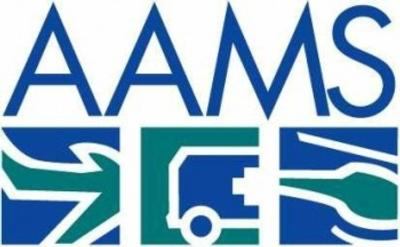Thu, Nov 18, 2021
Say Rules Ignore Significant AirMed Variables
The Association of Air Medical Services (AAMS) has filed suit in federal court challenging interim final regulations of the No Surprises Act. They believe that aspects of the implementation of the Act as they currently stand have left them unfairly vulnerable in comparison to other entities in the insurance ecosystem, owing to the special factors air ambulance service involves.

They state that they continue to support the aims of the Act, including the removal of patients from the middle of billing disputes between air ambulance providers and their patients' insurers. The point of dispute lies in the dispute resolution process, a tool meant to open negotiation between providers and insurers, where both would make their case for payment before an independent entity based on statutory factors. When the act was passed, Congress reportedly intended that no single statutory factor received special weighting in the process.
The interim regulations issued however, ignore Congressional intent, says the AAMS. They focus instead on one factor, the Qualified Payment Amount, or the insurer's median in-network rate for only a subset of their contracts for a given service in each area. The process ignores many factors inherent to air medical service, like aircraft type, the quality of services provided en route, and the acuity of the patient, that must be considered going forward to ensure the sustainability of the industry.

"Air Medical Services transport the sickest, most severely injured patients in our healthcare system - we fully support protecting those patients from these payment disputes and worked with Members of Congress and our larger healthcare community partners to ensure that happens,” said Cameron Curtis (pictured), AAMS President and CEO. “However, the fair and transparent process that we all supported is not the process being implemented. Instead, we are faced with a scenario in which a patient is in an emergency, is transported by a helicopter at the request of a trained first responder or qualified physician, and that patient’s insurer gets to unilaterally determine the amount they pay. This will have disastrous consequences for access to emergency air ambulance services.”
AAMS hopes their litigation will help revise these flaws in the interim regulations, return to the original intent of Congress, and protect the foundations of aerial medicine. "The intent of this law is clear," said Curtis. "And AAMS plans to fight for its members and their patients to ensure the sustainability of this necessary service."
More News
19-Year-Old Pilot Was Attempting to Fly Solo to All Seven Continents On his journey to become the first pilot to land solo on all seven continents, 19-year-old Ethan Guo has hit a >[...]
From 2017 (YouTube Edition): A Quality LSA For Well Under $100k… Aeroprakt unveiled its new LSA at the Deland Sport Aviation Showcase in November. Dennis Long, U.S. Importer>[...]
Hazardous Weather Information Summary of significant meteorological information (SIGMET/WS), convective significant meteorological information (convective SIGMET/WST), urgent pilot>[...]
Aero Linx: Historic Aircraft Association (HAA) The Historic Aircraft Association (HAA) was founded in 1979 with the aim of furthering the safe flying of historic aircraft in the UK>[...]
"We would like to remember Liam not just for the way he left this world, but for how he lived in it... Liam was fearless, not necessarily because he wasn't afraid but because he re>[...]
 TikToker Arrested After Landing His C182 in Antarctica
TikToker Arrested After Landing His C182 in Antarctica Classic Aero-TV: Versatile AND Practical - The All-Seeing Aeroprakt A-22 LSA
Classic Aero-TV: Versatile AND Practical - The All-Seeing Aeroprakt A-22 LSA ANN's Daily Aero-Term (06.27.25): Hazardous Weather Information
ANN's Daily Aero-Term (06.27.25): Hazardous Weather Information ANN's Daily Aero-Linx (06.27.25)
ANN's Daily Aero-Linx (06.27.25) Aero-News: Quote of the Day (06.27.25)
Aero-News: Quote of the Day (06.27.25)




